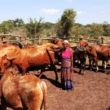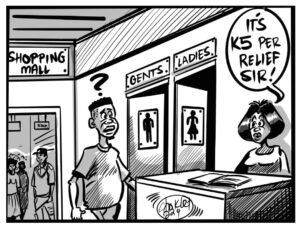Fisheries and Livestock Minister Kampamba Mulenga says government spent over K10 million in vaccinations of the Foot and Mouth disease, which broke out in Chisamba and Chibombo districts in March this year.
And Mulenga told Parliament yesterday that her Ministry will next Thursday lift the ban on the movement of livestock animals since the disease had been contained.
“The ministry will further undertake six monthly vaccinations of cattle against FMD in these areas in an effort to eradicate the disease through vaccination. My Ministry is also undertaking vaccination of cattle against FMD in the known FMD high-risk or endemic areas of Kafue flats, lower Zambezi from Livingstone to Sioma, and then Mbala-Isoka areas at great cost to government as the FMD vaccine is expensive. So far, over K10 million has been spent for the FMD vaccination countrywide. Mr Speaker, Sir, the above measures were done in pursuant to the Animal Heath Act number 27 of 2010 of the laws of Zambia and were intended to guard against the spread of the disease to other areas of the country as well as to curb the effects of the disease on the production and productivity and marketing of livestock and their products. Mr Speaker, laboratory analysis from accredited international reference laboratories in Botswana and the United Kingdom identified FMD stereo type O as the cause of the outbreak. Mr Speaker, My Ministry will next week 5th of July, 2018, lift the ban on the measures that were instituted as the outbreak has been contained,” Mulenga said.
“I rise to provide an update on the status of the Foot and Mouth disease outbreak in cattle in Chisamba and Chibombo districts of Central Province. The suspected outbreak of FMD was first reported to my Ministry in March, 2018, by one of the dairy farmers in Chisamba District who observed unusual drooling of saliva from the mouth. An outbreak investigation was then conducted by a team of experts from my Ministry who in addition to physical and clinical examination of the animals collected the blood and tissue samples. FMD was then confirmed by the Central Veterinary Research Institute. The tissue samples were then sent to international reference laboratories in Botswana and the United Kingdom for stereo typing and vaccine matching as Zambia has no facilities to present or to undertake this work. In addition, further investigations were carried out to determine the extent of the spread of the disease. It was noted that Chibombo district was also exposed.”
And Mulenga highlighted the measures that were put in place to contain the disease.
“The measures that were instituted included the following: livestock movement restrictions, disease surveillance awareness and extension services, ban of slaughters of cattle, pigs, goats, sheep and wildlife at amateurs unless under a prescribed protocol. Ban of the sale of raw mild from the infected farm or raw milk before being sold; the setting up of various security check-points at strategic points with support from the local taskforce comprising the district commissioners, farmers and other stake holders; the inspection of farms to ascertain the presence or absence of the disease; vaccination of animas against Foot and Mouth Disease in the affected areas. The first emergence vaccination covered 31,500 cattle that was the population at risk while the booster vaccination that we have just completed covered 61, 000 cattle,” said Mulenga.












